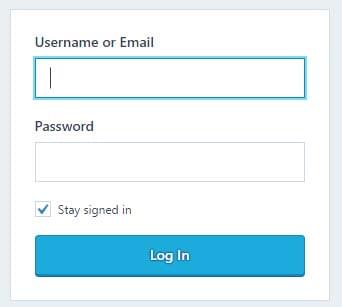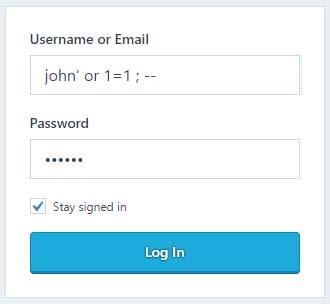How to Protect Your Website Against SQL Injection Attacks

Key Takeaways
- SQL injection attacks are a serious threat to website security that use vulnerabilities in a site’s input channels to target its database, potentially stealing or altering data, disrupting functionality, or gaining administrative access.
- To protect against SQL injection attacks, never trust user input, and always verify it for potential attack patterns. This includes not just text inputs, but hidden inputs, query string parameters, cookies, and file uploads.
- User input should be validated on the server side to ensure it is of the correct type and to neutralize any potentially malicious commands. This can be done through methods such as adding escape characters to input that could alter SQL commands, or using command parameters to replace user input in SQL commands.
- Regularly checking your website’s code for potential vulnerabilities is essential, as is preparing for the eventuality of an SQL injection attack. Measures to limit potential damage include avoiding administrative privileges, encrypting sensitive data, and not storing sensitive data unless absolutely necessary.
- Other protective measures include using separate connections for read and write database operations, limiting user account access to specific IP address ranges, using Windows Authentication model in MS SQL server, and using strong algorithms such as SHA-2 for password hashing.

Thanks to Chris Lienert and Guido Tonnaer for kindly helping to peer review this article.
Of all the attacks that can be staged against websites, SQL injection is among the most dangerous and pervasive kind, and has been used to deal real damage to businesses and organizations in the past year. The scheme has been used to target well-known organizations and firms, including TalkTalk, VTech, Wall Street Journal and the U.S. government.
In a nutshell, SQL injection — also referred to as SQLi — uses vulnerabilities in a website’s input channels to target the database that sits in the backend of the web application, where the most sensitive and valuable information is stored. The scheme can be used by attackers to steal or tamper with data, hamper application functionality, and, in a worst-case scenario, gain administrative access to the database server.
Here’s what you need to know about SQL injection and how to protect your site against it.
How SQL Injection Attacks Work
SQL injection attacks are staged by sending malicious SQL commands to database servers through web requests. Any input channel can be used to send the malicious commands, including <input> elements, query strings, cookies and files.
To see how it works, suppose you have a login form that takes a username and password:

When users enter their credentials and press the “log in” button, the information is posted back to your web server, where it is combined with an SQL command. For instance, in PHP, the code would look something like the following:
$sql_command = "select * from users where username = '" . $_POST['username']; $sql_command .= "' AND password = '" . $_POST['password'] . "'";
The command would then be sent to a database server, and the resulting dataset would determine whether the username and password correspond to a valid user account. An average user inputting “john” as username and “123456” as password (never use that password, by the way) would translate to the following command:
SELECT * FROM users WHERE username='john' AND password='123456'
But what if the user decides to try something else, such as the following:

The resulting command would be the following, which would always return a non-empty dataset:
SELECT * FROM users WHERE username='john' OR 1=1; -- ' AND password='123456'
The snippet would possibly allow the user to bypass the login screen without having proper credentials.
This is one of the simplest forms of SQL injection. With a little more effort, the same user can insert new user accounts, and delete or modify existing user accounts. In pages that display results, the same scheme can be used to display records and information that would otherwise be restricted to normal visitors, or to change the contents of records.
In more severe cases, where the connection to the database server is made through an administrative account (such as “root” in MySQL or “sa” in MS SQL Server), the attacker can go as far as fully compromising the server’s operating system. On Windows servers, this can manifest itself in the attacker executing extended stored procedures such as xp_cmdshell. In one case, attackers used an SQL injection vulnerability to create user accounts on the compromised server, enable the Remote Desktop feature, setup SMB shared folders and upload malware — aside from practically messing up everything that was stored in the database.
How to Protect Yourself Against SQL Injection Attacks
With user input channels being the main vector for SQL injection attacks, most of the defensive methods involve controlling and vetting user input for attack patterns.
Here are several measures that can ensure user input safety.
Never trust user input
The first rule of thumb about user input is “don’t trust and verify,” which effectively means all forms of user input should be considered malicious unless proved otherwise. This accounts not only for simple input boxes such as text areas and text boxes, but for everything else as well — such as hidden inputs, query string parameters, cookies and file uploads.
Just because the browser’s user interface doesn’t allow the user to manipulate an input, it doesn’t mean that it can’t be tampered with. Simple tools such as Burp Suite enable users to capture HTTP requests and modify anything, including hidden form values, before submitting them to the server. And if you think yourself clever by Base64 encoding your data, it can easily be decoded, modified and re-encoded by malicious users.
Validate input strings on the server side
Validation is the process of making sure the right type of input is provided by users and to neutralize any potential malicious commands that might be embedded in input string. For instance, in PHP, you can use the mysql\_real\_escape\_string() to escape characters that might change the nature of the SQL command.
An altered version of the previously-mentioned login code would be as follows:
$con=mysqli_connect("localhost","user","password","db");
$username = mysqli_real_escape_string($con, $_POST['username']);
$password = mysqli_real_escape_string($con, $_POST['password']);
$sql_command = "select * from users where username = '" . $username; $sql_command .= "' AND password = '" . $password . "'";
This simple modification would protect your code against the attack that was presented by adding an escape character (\) in front of the single quotes that were intentionally added by the malicious user.
A note on validation: If you’ve added client-side validation functions, well done. But don’t rely on it as a defensive measure against SQL injection attacks. While client-side functions might make it a notch harder to send malicious input to your server, it can easily be circumvented with a few browser tweaks and tools such as the one just mentioned. Therefore, you need to complement it with server-side validation.
Some programming platforms, such as ASP.NET, include built-in features that will automatically evaluate user input for malicious content on page postbacks. But they can be circumvented by hackers with enough nerves and subtlety, so you should nonetheless run user input through your own security check procedures. You can never be too cautious.
Use command parameters
A better alternative to escaping would be to use command parameters. Command parameters are defined by adding placeholder names in SQL commands, which will later be replaced by user input. ASP.NET has a very intuitive and easy-to-use set of APIs for this purpose.
The following code, written in C#, shows how you can use the command parameters to protect your website against SQL injection:
SqlCommand cmd = new SqlCommand ("SELECT * FROM users WHERE username=@username AND password=@password",con);
SqlParameter username = new SqlParameter(); username.ParameterName = "@username"; username.value = txtUsername.Text; cmd.Parameters.Add(username);
SqlParameter password = new SqlParameter(); password.ParameterName = "@password"; password.value = txtPassword.Text; cmd.Parameters.Add(password);
You start by creating a SqlCommand object and using the @parameter_name paradigm in the command string where user input should be inserted.
You then create instances of SqlParameter objects, in which you insert the user input, instead of directly concatenating it with the command string.
Finally, you add the SqlParameter object to the SqlCommand object’s Parameters collection, which will replace the parameters with the provided input. ADO.net takes care of the rest.
In PHP, the equivalent is prepared statements, which is a bit more involved than its ASP.net counterpart. You can explore it here.
Explicitly cast your input
This tip is for languages such as PHP, which are weakly typed, which means you do not usually define data types for variables, and the language automatically takes care of converting different data types between each other.
Explicit casts can act as a shortcut to escaping input where non-string types are involved. So, if you’re expecting the user to input an int for the age parameter, you can ensure the safety of the input with the following code in PHP:
$age = (int)$_POST['age'];
Take note that this snippet only validates the input’s type, not its range. So you’ll have to run other code to make sure the user doesn’t enter a negative age — or an unrealistic one such as 1300.
Also, another best practice is to avoid using single quotes in SQL commands where non-string input is involved. So instead of using the following code …
$sql_command = "select * from users where age = " . $age;
… it would be a bit safer to use the following one:
$sql_command = "select * from users where age = '" . $age . "'";
How to Root Out SQL Injection Vulnerabilities
As a general practice, you should check the code of every page for places where you combine page contents, commands, strings, etc. with sources that might come from users. Vetting your source code for vulnerabilities and security holes should be an inherent part of your software development process.
You can also use scanning tools such as sqlmap to crawl your site’s pages for potential SQL injection vulnerabilities. In fact, hackers frequently use this tool to find and exploit SQL injection attack vectors on targeted websites, so why not use it to make them more secure?
Your Last Line of Defense
No matter how much you harden your website’s security, you must prepare yourself for the day when SQL injections do take place. After all, as it is widely known in the cybersecurity industry, defenders have to win every fight, but hackers only have to win once.
Here are a few tips that will help you minimize the damage when you do become a SQL injection victim.
Avoid administrative privileges
Using the “root” or “sa” accounts to connect your web application to your database server is one of the worst mistakes you can commit. As I’ve already mentioned, a compromised administrative account can potentially give hackers access to the entire system. Even non-administrative accounts that have access to all databases within a server can be damaging, especially if the database server is being shared among different applications and databases.
Therefore, it’s best to use an account that only has simple read-write permissions to the specific database that sits behind your website, so in case your site becomes hacked through SQL injection, the scope of damage remains within the boundaries of that single database.
A more advanced approach would be to use separate connections for code segments that read from or write to your database, and further cull down permissions and roles for each segment. For instance, list pages — which do not make any modifications to the database but extensively use search parameters — can be coded to use a read-only connection to the database in order to further harden your code against mishaps.
In MySQL, improve security by limiting access to the user account to specific IP address ranges instead of the “%” model, in order to prevent compromised accounts from being accessed from remote locations.
In MS SQL server, I would strongly advise you to use the Windows Authentication model, which would limit hackers’ access to the database and make sure they won’t be able to use other channels to get into your database.
Also, unless you’re planning on using some of the advanced features of SQL Server, it is preferable to set up the windows service to use a limited account instead of the high privilege “Local System” account. This will minimize damage in case the “sa” account becomes compromised.
Encrypt sensitive data
Encrypt sensitive data in your database. This includes passwords, security questions and answers, financial data, health information, and other information that might be useful to malicious actors. This will make sure that even if hackers lay hands on your data, they won’t be able to exploit it immediately, giving you time to discover the breach, plug the hole, and take other reactive measures such as enforcing password resets, which will make sure that the stolen data loses its value before the attacker deciphers it.
If you’re hashing your passwords, use strong algorithms such as SHA-2, which will soon become the industry standard for password protection. MD5 and SHA-1 are obsolete and can be reversed.
For other forms of encryption, take care where you store the keys, and never put all your eggs in one basket. There would be no point in using encryption if the keys are right next to the encrypted data and hackers will easily gain access to them as soon as they compromise the server.
Don’t store sensitive data if you don’t need it
Whenever you store information in your database, consider how damaging it can become if it falls into the wrong hands, and decide whether you really need to store it or not. The Ashley Madison hack, which spilled the dark secrets and most intimate information of some 37 million people on the internet and dealt some serious damage, partly owed its success to the fact that the provider had refrained from wiping sensitive information from its databases.
So the bottom line is, don’t store sensitive information in your database unless you really have to. And even then, delete the information when it’s no longer of use.
Final Thoughts
SQL injection has been around for decades and will likely continue to top the vulnerability charts for years to come. It takes a few easy — but well-calculated — steps to protect yourself and your users against it, and it should be among your top priorities when auditing your source code for security holes.
The key to avoid being the victim of the next huge SQL injection data breach is first, to control and validate user input, and second, to prepare yourself for the “when,” not the “if.”
Frequently Asked Questions (FAQs) on Protecting Your Website Against SQL Injection Attacks
What is the first step in protecting my website from SQL injection attacks?
The first step in protecting your website from SQL injection attacks is to understand what SQL injection is. SQL injection is a code injection technique that attackers use to insert malicious SQL statements into input fields for execution. This can lead to unauthorized access to sensitive data, data loss, or even data corruption. Once you understand this, you can then implement measures such as input validation, parameterized queries, and using stored procedures to protect your website.
How does input validation help in preventing SQL injection attacks?
Input validation is a method where you define the syntax, content, and logical values for user input. By doing this, you can prevent attackers from inserting malicious SQL code into your website’s input fields. This is because the input validation process will reject any input that does not meet the defined criteria.
What are parameterized queries and how do they prevent SQL injection attacks?
Parameterized queries are a type of SQL query where placeholders are used for values and the values themselves are supplied at execution time. This means that even if an attacker tries to insert malicious SQL code, it will be treated as a literal string and not part of the SQL command. This effectively prevents SQL injection attacks.
How do stored procedures help in preventing SQL injection attacks?
Stored procedures are SQL statements that are stored in the database and can be called by the application. They can help prevent SQL injection attacks because they do not allow direct access to the database. Instead, they use parameters which are not executed as SQL commands, thus preventing any injected SQL code from being executed.
What is the role of error handling in preventing SQL injection attacks?
Proper error handling can help prevent SQL injection attacks by not revealing any information about the database structure or SQL syntax. This is because when an error occurs, the error message can give an attacker clues about the database structure or SQL syntax, which they can then use to refine their attack.
How can I use least privilege principle to protect my website from SQL injection attacks?
The least privilege principle means giving a user account or process only those privileges which are essential to perform its intended function. For example, if a user account only needs to read data from a database, there is no need to give it write access. This can help prevent SQL injection attacks by limiting what an attacker can do if they manage to exploit a vulnerability.
What is the role of regular updates in preventing SQL injection attacks?
Regular updates are important in preventing SQL injection attacks because they often include patches for known vulnerabilities. By keeping your software up-to-date, you can ensure that you are protected against known vulnerabilities that could be exploited by SQL injection attacks.
How can I use a web application firewall to protect my website from SQL injection attacks?
A web application firewall (WAF) can help protect your website from SQL injection attacks by filtering and monitoring HTTP traffic between a web application and the Internet. It can identify and block SQL injection attacks by detecting malicious SQL code in HTTP requests.
What is the role of intrusion detection systems in preventing SQL injection attacks?
Intrusion detection systems (IDS) can help prevent SQL injection attacks by monitoring network traffic and detecting suspicious activity. If an IDS detects a potential SQL injection attack, it can alert administrators or even take action to block the attack.
How can I use encryption to protect my website from SQL injection attacks?
Encryption can help protect your website from SQL injection attacks by making it more difficult for an attacker to read sensitive data. Even if an attacker manages to exploit a SQL injection vulnerability, they would still need to decrypt the data to make use of it.
Ben Dickson is a software engineer at Comelite IT Solutions. He writes about technology, business and politics across the web and on his Tech Talks blog.

Published in
·Community·News & Opinion·Podcast·Ruby·Ruby on Rails·Switching to Ruby·Web·December 6, 2016





